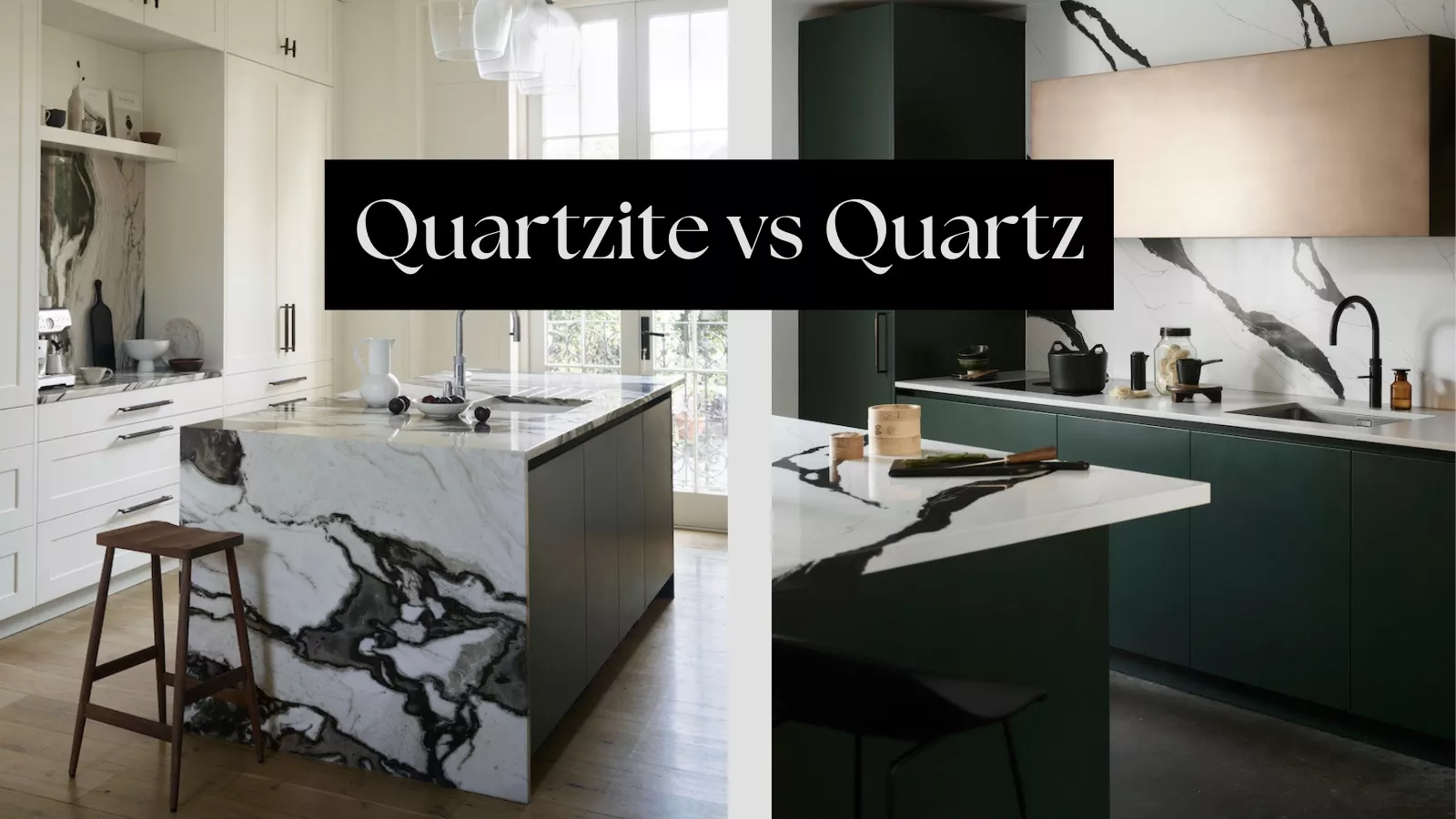Neal’s Nurseries: April In the Garden with Sunshine and Showers
April brings gardeners sunshine and showers, longer days and warmer weather. And… with Easter this month too, the extended weekend gives you more opportunity to ... Read Feature

There’s growing buzz around quartzite these days – a material that’s both ancient and on-trend. Some in the design world believe its dramatic appeal could soon rival that of marble for those drawn to naturally sourced worktops. At Roundhouse, the design team has long admired quartzite’s beauty and strength – but more recently, questions about how it compares to engineered quartz have been pouring in.
While the two share similarities (starting with their names), each has its own characteristics. This guide outlines the strengths and considerations of both materials to help narrow down your kitchen worktop ideas – whether you’re drawn to natural splendour or precision-engineered style.
Explore more worktop inspiration in the Roundhouse kitchen gallery or book a design consultation to speak with a Roundhouse expert.

The science bit
Quartzite is a naturally occurring metamorphic rock, created when sandstone is subjected to intense heat and pressure over time. The result is a dense, durable surface with crystalline depth and organic veining that makes every slab a one-off. Roundhouse’s Avenue project, which incorporates backlit Patagonia Quartzite, highlights how captivating this stone can be.
Though quartzite is tougher than both granite and marble, as a natural stone, it does require proper sealing to prevent staining. On the plus side, it’s impressively heat-resistant. While trivets and heatproof boards are always a wise precaution, this material can theoretically handle hot pans without issue.
Quartz worktops are manufactured surfaces made from 90–95% ground quartz crystal, combined with pigments and polymer resins. Because they are engineered, the colour and veining are easier to control, making them a great choice for anyone looking for consistent, seamless slabs. At the same time, innovations in quartz design have made it increasingly convincing at mimicking natural stone patterns.
One key benefit is its low maintenance – quartz is non-porous without the need for sealing, and it’s highly resistant to stains and scratches. That said, the resin content means it’s best to avoid prolonged exposure to high heat, so trivets remain essential.
See how Roundhouse uses Caesarstone’s Airy Concrete quartz in their Hamilton project – a perfect example of a modern, minimal finish with enduring practicality.

Costs and Considerations
Budget-wise, quartz is generally the more economical option, although prices can vary significantly depending on the brand, design complexity, and slab size. High-end quartz can still come with a premium price tag, particularly when it features intricate veining or large-format slabs.
Quartzite, on the other hand, sits firmly in the luxury tier. Its rarity, colour richness, and natural veining all contribute to a higher price point. Fabrication can also cost more, due to its weight and the skill required to match slabs across joins.
Take the Vitoria Regia quartzite used in Roundhouse’s Brown project – an exquisite example of how quartzite can elevate a kitchen with dramatic flair.

Practicality in the Everyday
In terms of day-to-day upkeep, quartz wins for ease. A simple wipe-down with a damp cloth is usually all that’s needed, and no sealing is required over time. Quartzite, while also straightforward to clean, does demand regular maintenance to protect against staining and to preserve its polished appearance.
For clients who fall in love with the look of quartzite but are wary of the upkeep, there are professional services that can manage resealing and buffing as needed. Ultimately, the decision depends on whether the aesthetic impact of a stone like the one in Roundhouse’s Brown kitchen is worth the extra care.

Environmental considerations
When it comes to environmental impact, both materials come with pros and cons. Quartz, being engineered, involves resins and processing that can carry a higher carbon footprint. However, many leading quartz manufacturers are working to improve their environmental credentials.
Quartzite’s main environmental impact comes from the quarrying and transport process. Yet because it requires minimal additional processing, it’s sometimes viewed as a more sustainable choice. The longevity of both materials also reduces waste over time, making a sound option in terms of durability.
Discover more design insights and sustainable material ideas in the Roundhouse kitchen design blog.

Final Thoughts
Whether you lean toward the sleek consistency of quartz or the bold individuality of quartzite, both surfaces bring compelling advantages to the kitchen. Your choice will likely come down to visual preference, lifestyle needs, and budget.
To explore these materials up close and discuss your project with expert designers, consider visiting one of Roundhouse’s seven UK showrooms in Wigmore St, Clapham, Fulham, Richmond, Cambridge, Guildford or Cheltenham.
Get inspired by browsing the full Roundhouse brochure and schedule your free design consultation today to bring your dream kitchen to life with Roundhouse.
For the latest design trends, expert insights, and planning advice, sign up for Roundhouse Design newsletter.
April brings gardeners sunshine and showers, longer days and warmer weather. And… with Easter this month too, the extended weekend gives you more opportunity to ... Read Feature
Local market leaders, Rampton Baseley’s marketing is often the talk of the town, and certainly Nappy Valley, for its bold creativity and stand-out originality.... Read Feature
For twenty years, Gentleman & A Van has offered a wide range of services including a Man and Van service for smaller moves through to ... Read Feature